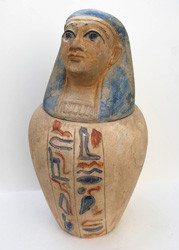Updating Egyptian chronologies
With the support of EU funding, the project EGYPT IN THE LEVANT, investigated material remains from the first half of the second millennium BC and included older published sites as well as active sites. Combining these results with scientific analyses, the study's outcomes offer a new chronological framework for reconstructing the history between Egypt and the eastern Mediterranean during that period. Study sites included Ebla, Tell 'Arqa, Byblos and Sidon (northern Levant) and Tel Kabri, Tel Dan, Ashkelon and Tell el-'Ajjul (southern Levant). Researchers focused on imported artefacts to these sites from Crete, Cyprus and Egypt. For the first time, the project considered, Egyptian pottery in the Levant, studying materials at different museums and in the store rooms of particular excavation sites. The novel approach has given new insights into trade between the two regions. For example, Egyptian pottery found at Sidon supports the connection referenced in written records that Egypt was politically active in the northern Levant during the later phase of the Middle Bronze (MB) I period. Other materials from a later date point to a wide trading network bringing foreign goods to Egypt. Included in these are imports of Middle Cypriote-period pottery, suggesting the start of copper trade with Cyprus. Examination of stolen objects in early MB II tombs allowed the project to tie in and link events and transitions that took place in Egypt's political sphere. This is specific to the period from the time of the collapse of the Middle Kingdom to the advanced MB II period. Shifts in power in the eastern Mediterranean had major implications for bordering countries, and gave rise to new political and economic entities, such as Cyprus. As such, the results and outcomes of EGYPT IN THE LEVANT provide a new opportunity to advance understanding of political and economic events during the time in question. They also help underline how interactions through trade impacted and shaped cultural spheres on both sides.
Keywords
Chronologies, Levant, material remains, history, excavation sites







